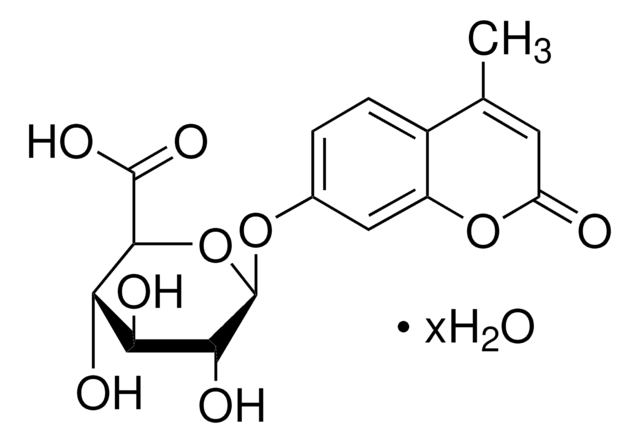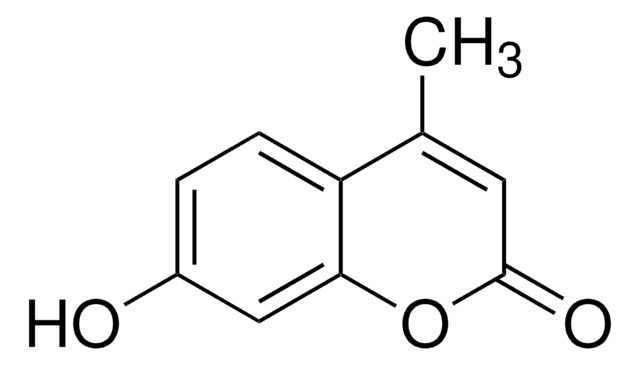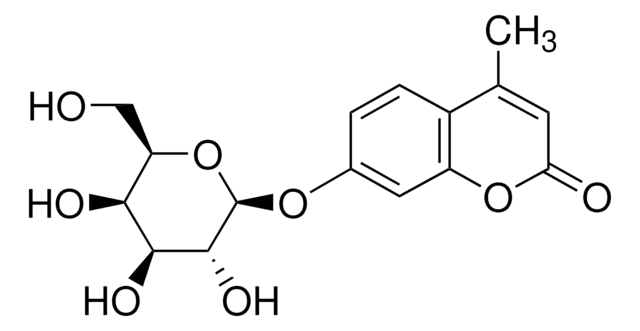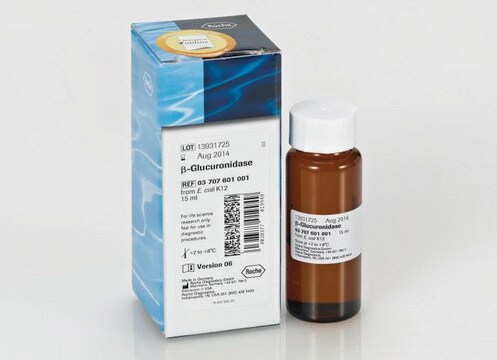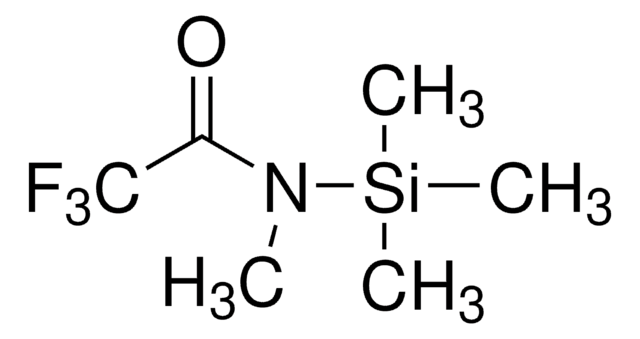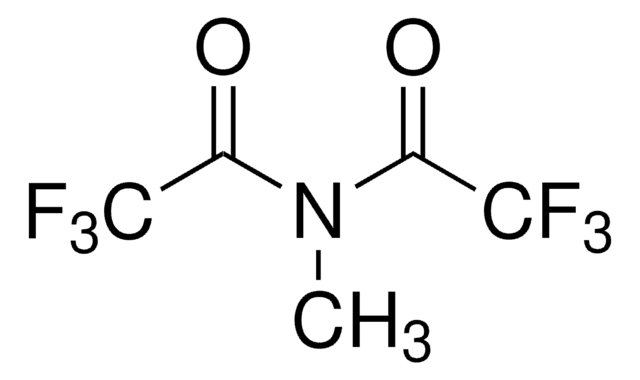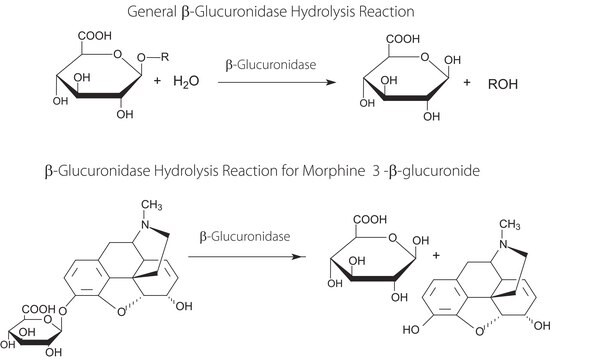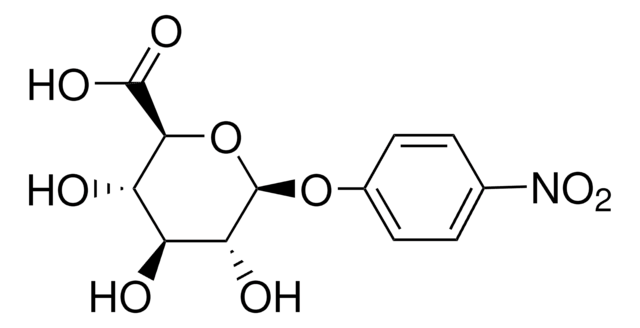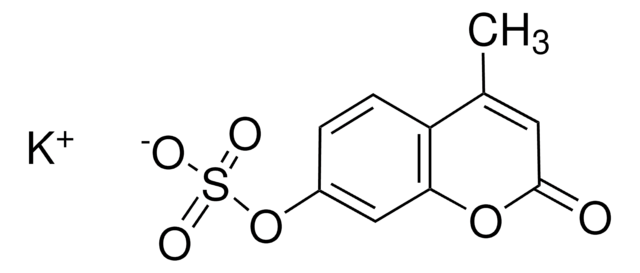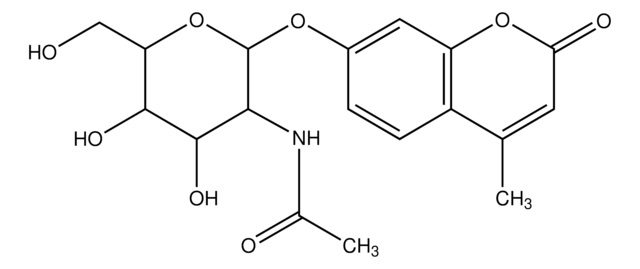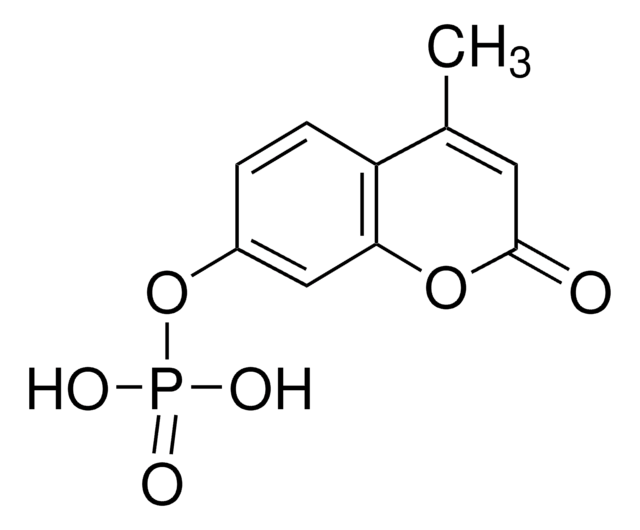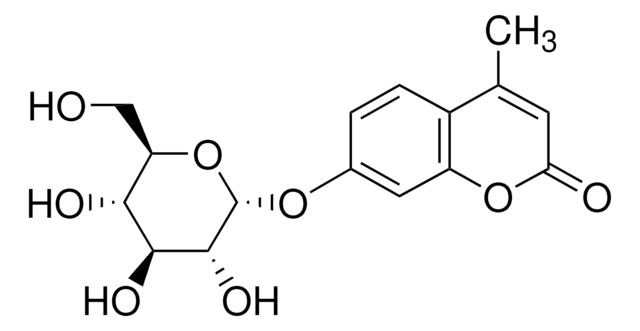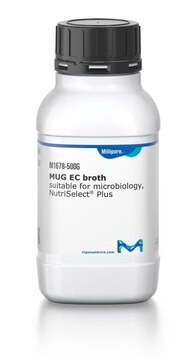M9130
4-Methylumbelliferyl-β-D-glucuronide hydrate
≥98% (HPLC), BioReagent, for identification of transformed plants
Synonym(s):
4-Methylumbelliferyl-β-D-glucopyranosiduronic acid, MUG
About This Item
Recommended Products
grade
for molecular biology
Quality Level
product line
BioReagent
Assay
≥98% (HPLC)
form
powder
solubility
pyridine: 50 mg/mL, clear, colorless to very faintly yellow
storage temp.
−20°C
SMILES string
O.CC1=CC(=O)Oc2cc(O[C@@H]3O[C@@H]([C@@H](O)[C@H](O)[C@H]3O)C(O)=O)ccc12
InChI
1S/C16H16O9.H2O/c1-6-4-10(17)24-9-5-7(2-3-8(6)9)23-16-13(20)11(18)12(19)14(25-16)15(21)22;/h2-5,11-14,16,18-20H,1H3,(H,21,22);1H2/t11-,12-,13+,14-,16+;/m0./s1
InChI key
URVSQZMOFUEQAW-YYHOVTOASA-N
Looking for similar products? Visit Product Comparison Guide
General description
Application
Reconstitution
related product
Storage Class Code
11 - Combustible Solids
WGK
WGK 3
Flash Point(F)
Not applicable
Flash Point(C)
Not applicable
Personal Protective Equipment
Choose from one of the most recent versions:
Already Own This Product?
Find documentation for the products that you have recently purchased in the Document Library.
Customers Also Viewed
Articles
probiotics-and-human
Our team of scientists has experience in all areas of research including Life Science, Material Science, Chemical Synthesis, Chromatography, Analytical and many others.
Contact Technical Service